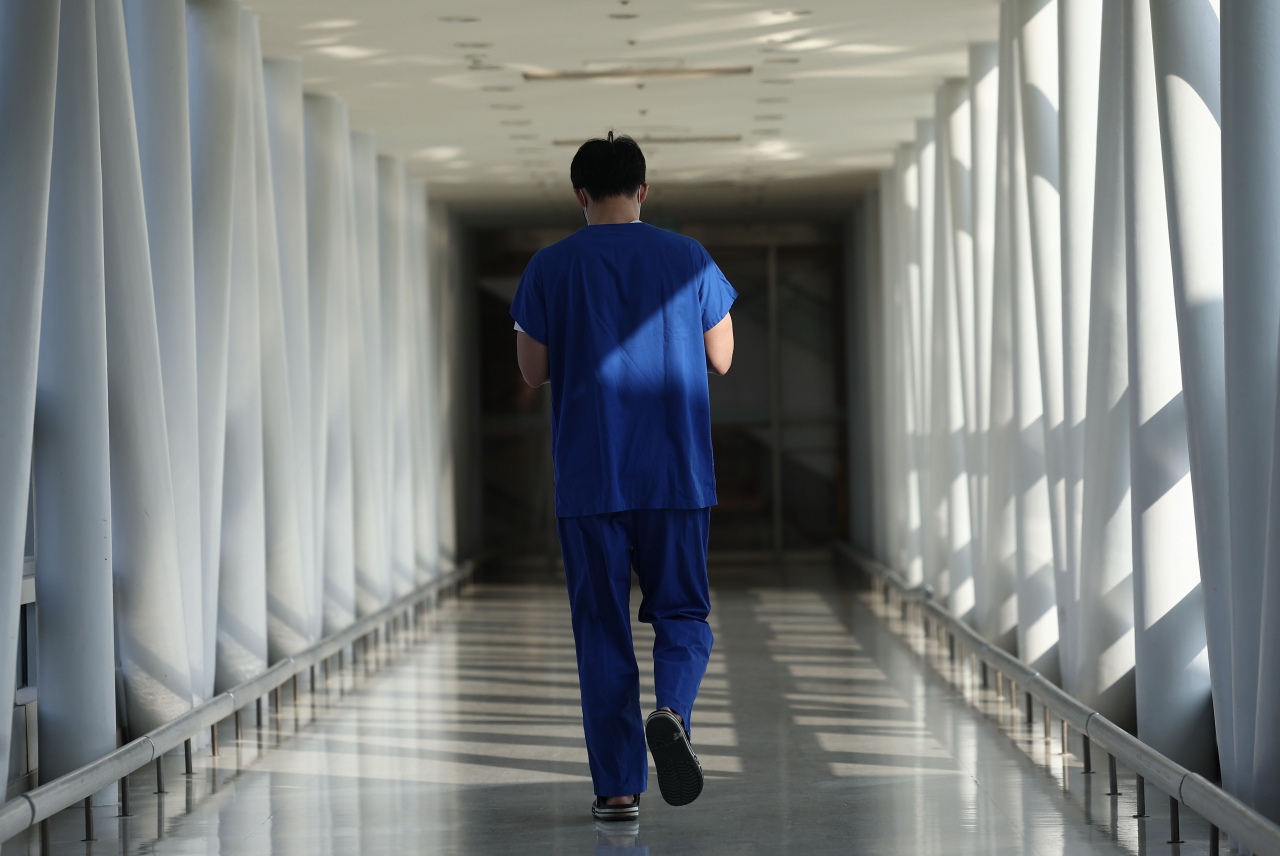Under pressure, junior doctors leave strike decision hanging
Doctors cautious on collective action as government ups ante
By Park Jun-heePublished : Feb. 13, 2024 - 15:14

Tensions continued to build Tuesday between doctors and the government, with a group of over 10,000 junior doctors ending their first discussion about joining the nationwide strike without reaching a conclusion. Instead, they decided to forge an emergency committee in an apparent move to escalate their offensive against the government plan to increase the medical school enrollment quota.
The Korea Intern Resident Association, consisting of thousands of junior doctors essential to the critical care of patients in large hospitals across the country, said it would transition into an emergency leadership committee system to make an active response against the plan which they claim will lower the nation’s health service quality.
Although no further announcement was made regarding plans to engage in collective action on the group’s official website, observers suggest that the shift translates into them buying time to mull measures possibly to take collective action within legal boundaries in which they could keep their medical licenses.
According to reports, some are also seeking ways to protest by refusing to renew training contracts with hospitals. Also, some interns are considering leaving the hospital after completing their training if they can’t submit resignations. If the walkouts were to occur, observers believe it would likely happen after Thursday when the specialist practical examination ends.
In addition, the Korea Association of Medical Colleges, a group of current medical students, was set to hold an emergency general assembly late Tuesday to discuss how it will respond to the Yoon government's announcement to lift the enrollment in medical school admissions.
Woo Sung-jin, the head of the group’s emergency committee, said that the meeting will discuss organizing collective action, according to local reports. Medical students are considering applying for a leave of absence en masse, it added.
Following the KIRA’s announcement, the South Korean government continued to apply pressure, saying that it has come up with countermeasures to deal with any potential collective actions and that participating medical workers are not going to be reinstated as they had been during previous administrations. The then-Moon Jae-in government medical students an additional chance to take the national health examination to those who had joined the last strike against the student quota.
Second Vice Minister of Health and Welfare Park Min-soo said during Tuesday’s press briefing that doctors should refrain from throwing their white coats and stay beside patients.
President Yoon Suk Yeol said on the same day that a critical aspect of health care is pediatric care, stressing the need for a comprehensive medical system for children to ensure their right to health, during a public debate at Busan City Hall. Yoon also underscored the need to beef up pediatric wards at regional universities and general hospitals so children in Busan could receive proper treatment.
In response, the Health Ministry said it would make efforts to supply the required number of medical personnel for children’s hospitals in the future through its planned expansion in medical student numbers.
Despite the government’s plea, however, doctors were seen as preparing for massive walkouts, sparking concerns over a possible health care crisis.
According to reports citing medical sources, junior doctors at the so-called “big five” hospitals in Seoul have put their own emergency response committees in place to take part in the strike immediately. The five major hospitals are: Seoul National University Hospital, Severance Hospital, Samsung Medical Center, Asan Medical Center and the Catholic University of Korea Seoul St. Mary’s Hospital.
Currently, there are around 15,000 specialist doctors in South Korea, including 2,311 specialists in the country’s five major hospitals, which is about 13 percent of the total number of doctors here.
While the number seems small, they are instrumental in conducting medical operations at large general hospitals or university hospitals as they handle night shifts, work over holidays and participate in surgeries for severe and emergency cases.
If they go on strike, the work stoppage could come as a blow to patient care, with surgeries and appointments being postponed indefinitely and operations at emergency rooms and intensive care units being disrupted.
In 2020, the government bowed to the pressure when more than 80 percent of junior doctors, including those in essential medical fields such as pediatrics and obstetrics and gynecology, struck and even quit in response to the plan at the time to raise the medical school enrollment quota by 400 places per year over ten years.
“The hospital hasn’t been informed yet (on doctors) going on strike at this point, nor have they informed us. We haven’t come up with specific measures at this point,” an official at one of the big five hospitals, who wished to speak on the condition of anonymity, told The Korea Herald, declining to comment further.
Meanwhile, the Korean Medical Association -- the country’s largest coalition of doctors’ groups with some 130,000 members -- also established an emergency response committee last week as a follow-up measure over Lee Pil-soo’s resignation as head of the KMA.
The major lobby group for doctors is set to hold large protest rallies on Thursday in 16 cities and provinces across the country to try to flip the government’s decision. The KMA’s emergency committee is also mulling convening a national physician representative conference on Saturday to discuss specific plans for the strike.



















![[Today’s K-pop] Treasure to publish magazine for debut anniversary](http://res.heraldm.com/phpwas/restmb_idxmake.php?idx=642&simg=/content/image/2024/07/26/20240726050551_0.jpg&u=)